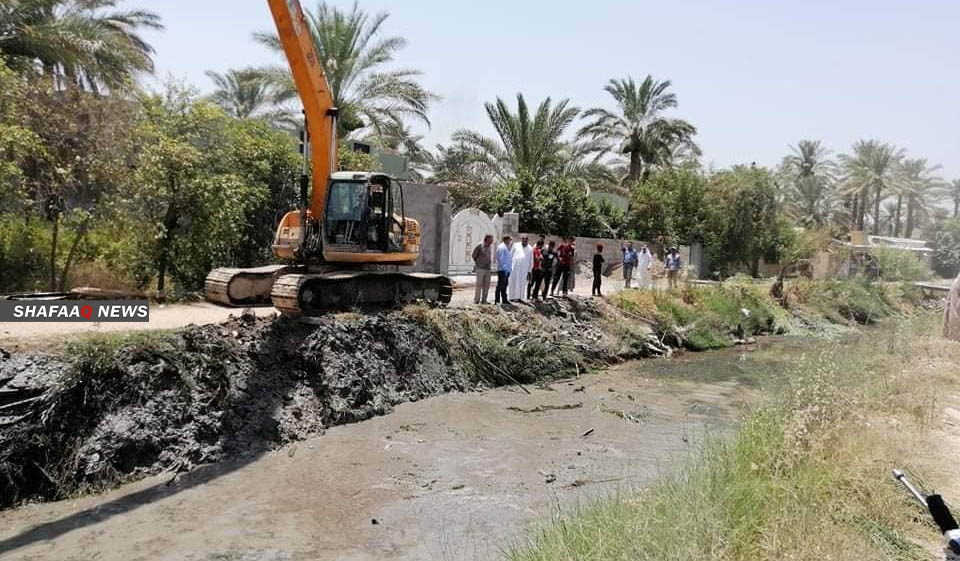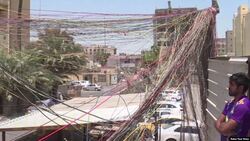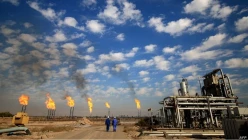Iraq the big loser of Middle East water wars

Shafaq News/ With two of the world’s most famous rivers flowing through it, Iraq was known for centuries as the Middle East’s “Fertile Crescent,” its rich civilizations watered by the Tigris and Euphrates.
Now though, soaring temperatures, a lengthy drought, poor water management and fractious politics have combined to threaten eco-catastrophe for these rivers and the country.
“The water situation is now truly terrible, all across Iraq,” Fabrice Balanche, a regional water expert from the University of Lyon, told Asia Times. “Pollution, waste, lack of flow and lack of rain – all are now having an impact.”
Upstream damming by Turkey and Iran has cut water supply in these vital rivers and their tributaries, while also handing Ankara and Tehran considerable power over their Iraqi neighbor.
At the same time, control of what water remains is fuelling domestic tensions in Iraq, with local dams and reservoirs an increasing focus for armed groups.
“In the past, we used to think that states would go to war over water,” Ibrahim Al Marashi, Iraq expert from the University of Southern California, San Marcos, told Asia Times. “But now, it’s much more about conflict over water within countries – Syrians versus Syrians, Iraqis versus Iraqis.”
Yet the water issue also remains largely unaddressed by the government of the problem-beset country – with many now fearing that with escalating climate change, time may be fast running out for the “Fertile Crescent.”
Systems and cisterns
The 3,000 kilometer-long Euphrates and 1,900 kilometer-long Tigris both rise in the mountains of southern Turkey, before beginning journeys that end in southern Iraq, at the Shatt-al-Arab waterway, at the head of the Gulf.
Both rivers flow through Turkey, Syria and Iraq, although the Tigris only briefly touches the Syrian border northwest of Mosul. A number of key watercourses also flow into Iraq from Iran, to the east.
Add all this up and “more than 90% of Iraq’s water comes from outside the country,” says Balanche.
In the 1990s, however, Turkey started constructing a series of dams across the Euphrates and Tigris, known as the GAP Project.
Overall, 22 dams are planned under this, with 16 now completed.
Water from GAP has so far doubled the amount of irrigated farmland in Turkey, according to the project’s own figures, with the production of water-intensive cotton and grain crops surging.
Syria, too, has built dams on the Euphrates, with the Tishrin and Tabqa barrages supplying both drinking water and irrigation, as well as power.
In 1987, Turkey agreed to supply Syria with an average 500 m3 per second of water through the Euphrates, with Damascus subsequently agreeing to supply 58% of this to Iraq.
The Tigris is also supplied with water from Iran, to the east, via a number of rivers. Indeed, some two-thirds of all the water that leaves the Islamic Republic goes into Iraq.
With plenty of water still flowing, then, for many years, Iraq continued to be relatively water-rich for the region.
Yet, “when you have enough rain, as you had in previous decades, this all works fine,” says Balanche. “The problem is that now, you don’t.”
Recent years have seen a dramatic decline in rainfall in south-eastern Turkey and Iran, with scientists predicting climate change means worse to come.
A 2012 UN Food and Agriculture Organisation (FAO) report showed water flow in the Tigris and Euphrates already down by 60% in the previous two decades.
“Across the whole Middle East, we’ll see around 40% less rain by 2040-2050,” adds Balanche, “so the amount of water coming into the system will fall, while population and demand will keep rising.”
Iran is also taking steps to keep more water in its own territory, with 16 dams built on the Sirwan river alone in recent years.
Iran’s water ministry also plans the construction of 109 more dams by the end of this year, mainly on rivers flowing into Iraq.
At the same time, there is a huge amount of water wastage in Iraq.
In the southern part of the country in particular, millennia-old irrigation methods include the flooding of fields – a method condemned by the FAO for wasting about 85% of the water used.
Evaporation in the intense summer heat is one reason for this, with flood irrigation also leaving the ground covered in salt, as the water gradually dissipates.
After the harvest, the fields then have to be ‘washed’ with more water, to get rid of the salt.
This “wash” water then flows back into the rivers, boosting salinity.
When river pollution is then added in – sewerage systems throughout Iraq are largely broken down or destroyed – “by the time you reach southern Iraq,” says Balanche, “a lot of the river water is unusable.”
Political pressures
With its dams now operational on both the Tigris and Euphrates, “Turkey is now a water hegemon,” says Al Marashi.
Ankara is not afraid to use this status, either.
Back in May, in neighboring Syria, officials from the largely ethnic Kurdish group that controls much of the current Syrian-Turkish border claimed that the flow of water through the Euphrates had been cut to only 200 m3/second.
“This is a blockade approach by the Turkish government to undermine our authority and harm our region,” Badran Chia Kurd, the executive deputy president of the region, told local Kurdish radio on May 4.
Turkey is completely opposed to Kurdish control in this region, seeing local fighters as linked to its own ethnic Kurdish separatists, the PKK – who have long been active in the GAP Project region.
Iran’s control of the Sirwan and Little Zab rivers also gives it major leverage over Kurdish-controlled northern Iraq, with Tehran long concerned over the influence this region has on its own ethnic Kurdish population.
Non-state actors, too, have been taking opportunities to use water to exercise power.
“Islamic State [ISIS] is the best case of this,” says Al Marashi.
In 2014, when ISIS swept across Iraq, they captured the Mosul dam – a major Iraqi barrage on the Tigris.
“They could use this to deny the use of water to their enemies,” says Al Marashi. “They could also threaten to unleash a devastating flood downstream by destroying it. This is a good example of ‘hydro-terrorism’ – a kind of localized conflict over access to water that we may start to see a lot more of.”
Cutting off the water can also lead to displacement, pushing populations out of arid areas.
Iran’s dams, for example, “will force people to migrate to other places,” Rahman Khani, the director of the rapidly emptying Darbandikhan dam in northern Iraq, told reporters back in May 2020.
Some two million people are dependent on the rivers flowing from Iran into Iraq’s Kurdish-controlled north.
“Conflict will come,” says Balanche. “The right to water has always been the right of the strongest – and Iraq, right now, is not a strong country.”
Source: Asia Times





